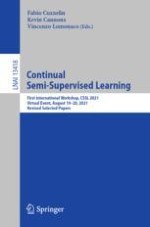2022 | Book
Continual Semi-Supervised Learning
First International Workshop, CSSL 2021, Virtual Event, August 19–20, 2021, Revised Selected Papers
Editors: Fabio Cuzzolin, Kevin Cannons, Vincenzo Lomonaco
Publisher: Springer International Publishing
Book Series : Lecture Notes in Computer Science
